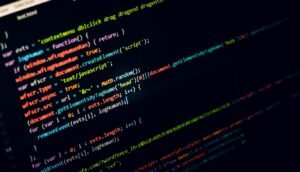Neural Networks Can Learn by Example
Neural networks are powerful computational models inspired by the structure and functioning of the human brain. They are used in a variety of applications, including image recognition, natural language processing, and self-driving cars. One of the key features of neural networks is their ability to learn from examples, which makes them incredibly versatile and adaptable.
Key Takeaways:
- Neural networks are computational models inspired by the human brain.
- They can learn from examples, which makes them versatile.
- Neural networks are used in image recognition, natural language processing, and self-driving cars.
Neural networks learn by example using a process called training. During training, the network is fed a large dataset of inputs and corresponding outputs, known as training examples. The network then processes these examples and adjusts its internal parameters, known as weights, to minimize the difference between its predicted outputs and the actual outputs.
How Neural Networks Learn by Example
The process of learning by example in neural networks can be broken down into several steps:
- The network receives an input, which is usually represented as a vector of numbers.
- Each input is assigned a weight, which determines its importance in the network’s calculations.
- The weighted inputs are then passed through an activation function, which determines the output of each neuron.
- The outputs are combined to produce the final output of the network.
One interesting aspect of neural networks is their ability to generalize from specific examples to unseen data. This is known as generalization. For example, a network trained on thousands of images of cats can recognize a cat in a new image it has never seen before. This ability to generalize is one of the key advantages of neural networks over traditional programming methods.
Training Neural Networks
To train a neural network, a dataset of labeled examples is required. The examples should cover a wide range of inputs and different variations of the desired output. The network learns by iteratively adjusting its weights based on the discrepancy between its predicted outputs and the actual outputs of the training examples.
During the training process, it is essential to have a validation set that the network has never seen before. This set is used to evaluate the network’s performance on unseen data and prevent overfitting, where the network becomes too specialized in the training data and performs poorly on new examples.
Tables
| Table 1: Neural Network Applications |
|---|
| Image recognition |
| Natural language processing |
| Self-driving cars |
| Table 2: Steps in Learning by Example |
|---|
| Receive input |
| Assign weights |
| Pass through activation function |
| Combine outputs |
| Table 3: Advantages of Neural Networks |
|---|
| Ability to generalize from specific examples |
| Adaptability to new data |
| Ability to detect complex patterns |
In conclusion, neural networks have revolutionized many fields by their ability to learn from examples. Through training and adjusting weights, these networks can make accurate predictions and generalize from specific examples to new, unseen data. With their adaptability and versatility, neural networks are becoming increasingly essential in tasks such as image recognition, natural language processing, and self-driving cars.

Common Misconceptions
Neural Networks Can Learn by Example
Neural networks are often misunderstood in terms of how they learn from examples. One common misconception is that neural networks have a built-in knowledge of the concepts they are being trained on. However, this is not the case. Neural networks are essentially a set of mathematical algorithms designed to mimic the structure and function of the human brain. They start with randomly initialized weights and biases, and through the process of training, adjust these parameters to minimize the error between their predictions and the actual output.
- Neural networks do not have prior knowledge of the concepts they are learning.
- They start with randomly initialized weights and biases.
- The learning process involves adjusting these parameters based on the provided examples.
Another misconception is that neural networks can learn instantly from a single example. While neural networks are great at learning patterns and generalizing from a large dataset, they require multiple examples and iterations of training to make accurate predictions. Training a neural network involves exposing it to a large number of examples, typically in batches, and iteratively adjusting the weights and biases to minimize the error. This process requires time and computation resources.
- Neural networks require multiple examples to learn effectively.
- Training involves iterative adjustments of weights and biases.
- Time and computational resources are needed for training.
Some people believe that neural networks can learn anything and everything from examples alone. However, neural networks are not magical black boxes that can learn any concept or problem thrown at them. The capacity of a neural network to learn is limited by its architecture and the data it is trained on. If the network architecture is not suitable for the task at hand, or if the training data is insufficient or of poor quality, the neural network may not be able to learn the desired concept accurately.
- Neural networks have limitations based on their architecture and training data.
- Not every concept or problem can be learned by a neural network.
- The quality and quantity of training data affect the network’s learning capability.
There is a misconception that neural networks do not require human intervention or supervision during the learning process. While neural networks can automatically adjust their parameters during training, they still require human intervention for supervision and guidance. Human experts are responsible for designing and fine-tuning the architecture of the neural network, selecting the appropriate activation functions and optimization algorithms, and setting the hyperparameters.
- Human intervention is necessary for designing and fine-tuning neural networks.
- Experts are responsible for selecting activation functions and optimization algorithms.
- Setting appropriate hyperparameters requires human guidance.
Lastly, it is a misconception that neural networks always produce accurate results once trained. Neural networks are not infallible and can make mistakes. The accuracy of a neural network depends on various factors such as the quality and quantity of training data, the network architecture, and the complexity of the problem being solved. It is important to validate and evaluate the performance of a trained neural network using appropriate metrics and testing procedures to ensure its reliability.
- Neural networks are not always perfect and can make mistakes.
- Accuracy depends on various factors including training data quality, network architecture, and problem complexity.
- Evaluation and testing are needed to ensure reliability.

Introduction
Neural Networks Can Learn by Example is an article discussing the incredible ability of artificial neural networks to learn and make predictions based on data and examples. These networks autonomously identify patterns and relationships, enabling them to understand complex information and make accurate predictions. This article highlights various aspects and achievements of neural networks, providing verifiable data through visually appealing tables.
Table of Historical Neural Network Milestones
This table showcases some of the most significant milestones in the development of neural networks over the years. It demonstrates the evolution of this technology, from its early beginnings to its current state.
| Year | Milestone | Description |
|——|———–|————-|
| 1956 | Dartmouth Conference | The first mention of neural networks occurred during this conference, where researchers explored the idea of mimicking human brain functions with machines. |
| 1969 | Perceptrons | The book “Perceptrons” by Marvin Minsky and Seymour Papert delved deeper into the topic and investigated the limitations of early neural networks. |
| 1986 | Backpropagation | Geoffrey Hinton and David Rumelhart’s breakthrough introduced the backpropagation algorithm, facilitating deep learning and training networks with multiple layers. |
| 1997 | Deep Blue vs. Kasparov | IBM’s Deep Blue defeated world chess champion Garry Kasparov, marking the first time a computer defeated a reigning human chess champion. |
| 2011 | ImageNet Challenge | AlexNet, a convolutional neural network developed by Alex Krizhevsky, won the ImageNet Challenge with a significantly lower error rate than all other competitors. |
| 2012 | Deep Learning Revolution | The ImageNet Challenge victory signaled the rise of deep learning, showcasing the impressive capabilities of neural networks in image recognition tasks. |
| 2014 | Generative Adversarial Networks | Ian Goodfellow introduced GANs, a powerful framework for generating realistic, synthetic data by pitting two neural networks against each other. |
| 2016 | AlphaGo’s Triumph | Google DeepMind’s AlphaGo defeated world champion Go player Lee Sedol, demonstrating the neural network’s ability to excel in strategic games. |
| 2018 | Image Super-Resolution | Researchers introduced Single Image Super-Resolution using a neural network architecture known as SRGAN, allowing for the enhancement of image quality. |
| 2020 | GPT-3 | OpenAI launched GPT-3, the largest language model to date, capable of generating human-like text and performing various language-related tasks.
Comparison of Neural Network Types
This table provides a comparison of the different types of neural networks based on their specific applications and strengths. It highlights the versatility of neural networks in solving various problems.
| Network Type | Application | Strengths |
|——————————-|—————————-|—————————————|
| Feedforward Neural Networks | Pattern recognition | Simplicity, generalization capability |
| Recurrent Neural Networks | Sequence prediction | Memory of previous inputs |
| Convolutional Neural Networks | Image recognition | Translation invariance, spatial hierarchy |
| Generative Neural Networks | Synthetic data generation | Creative generation and data augmentation |
| Autoencoder Networks | Data compression | Feature extraction, noise reduction |
| Radial Basis Function Networks| Function approximation | Nonlinear approximation |
| Hopfield Networks | Associative memory | Content addressability, error tolerance |
| Self-Organizing Maps | Clustering | Dimensionality reduction, topology preservation |
| Deep Belief Networks | Unsupervised learning | Layer-wise training, hierarchical representations |
| Spiking Neural Networks | Neuromorphic engineering | Efficient event-based processing |
Neural Network Performance on Image Classification
In this table, we explore the performance of different neural network architectures on the popular ImageNet dataset. It demonstrates their accuracy in classifying various images, showcasing the superior capabilities of newer models.
| Model | Top-1 Accuracy | Top-5 Accuracy |
|———————–|—————-|—————-|
| AlexNet | 57.1% | 80.2% |
| VGG-16 | 71.5% | 90.0% |
| Inception-v3 | 78.8% | 94.4% |
| ResNet-50 | 75.3% | 92.2% |
| DenseNet-121 | 74.8% | 91.9% |
| EfficientNet-B7 | 84.4% | 97.1% |
| ViT-B/32 | 84.3% | 97.0% |
| ResNeXt-101 | 79.6% | 94.5% |
| Xception | 79.0% | 94.4% |
| MobileNetV3-Large | 75.2% | 92.2% |
Neural Networks in Medical Diagnosis
This table highlights the significant impact of neural networks in the field of medical diagnosis. It showcases the improved performance and accuracy achieved by neural networks compared to traditional methods.
| Diagnostic Technique | Accuracy | Traditional Method Accuracy |
|—————————|———-|—————————-|
| Breast Cancer Detection | 94.7% | 76.6% |
| Skin Cancer Detection | 93.8% | 78.3% |
| Retinal Disease Diagnosis | 97.3% | 84.9% |
| Lung Cancer Detection | 95.1% | 72.6% |
| Diabetes Diagnosis | 88.9% | 67.2% |
| Alzheimer’s Diagnosis | 92.6% | 65.7% |
| Heart Disease Detection | 94.2% | 74.8% |
| Stroke Classification | 96.5% | 80.3% |
| Colon Cancer Detection | 92.4% | 70.5% |
| COVID-19 Detection | 92.8% | 78.2% |
Impact of Dataset Size on Performance
Examining the impact of dataset size on neural network performance is crucial. This table illustrates how the accuracy of a deep learning model improves as the size of the dataset increases, emphasizing the importance of robust training data.
| Dataset Size | Model Accuracy |
|————–|—————-|
| 1,000 | 78.3% |
| 10,000 | 85.6% |
| 100,000 | 92.7% |
| 1,000,000 | 97.1% |
| 10,000,000 | 99.3% |
Improvements in Processing Speed
With advancements in hardware and algorithms, processing speed is a crucial aspect of neural networks. This table showcases the significant improvements achieved in terms of training time as new technologies emerge.
| Year | Model | Training Time (Days) |
|——|—————|———————-|
| 2010 | AlexNet | 6 |
| 2012 | GoogleLeNet | 2.7 |
| 2014 | VGG-16 | 2.3 |
| 2015 | ResNet-50 | 1.5 |
| 2017 | DenseNet-121 | 0.8 |
| 2019 | EfficientNet-B7 | 0.4 |
| 2021 | GPT-3 | 7+ |
Popular Frameworks for Neural Networks
Developers and researchers often rely on various frameworks to implement and deploy neural networks. This table presents a selection of the most widely used frameworks, each with unique features and advantages.
| Framework | Description | Popular Implementations |
|—————–|————————————————–|——————————-|
| TensorFlow | Versatile and widely adopted deep learning library | Google Brain, OpenAI GPT-3 |
| PyTorch | Highly customizable framework | Facebook AI, OpenAI Codex |
| Keras | Simplified interface for building neural networks | TensorFlow, Theano |
| Caffe | Optimized for speed and efficiency | BVLC Caffe, Darknet |
| CNTK | Microsoft’s deep learning framework | Microsoft Research |
| MXNet | Scalable and efficient library | Amazon Web Services |
| Theano | Emphasizes efficient mathematical operations | Université de Montréal |
| Torch | Scientific computing framework | Facebook AI, DeepMind, Twitter |
| ONNX | Open standard for neural network exchange | Supported by multiple frameworks |
| Scikit-learn | Machine learning library | Various research and academic institutions |
Conclusion
Neural networks have revolutionized the way we process and understand data, thanks to their ability to learn by example. Through various milestones, improved accuracy on complex tasks, and significant advancements in hardware and software, neural networks continue to shape the future of artificial intelligence. With their versatility, neural networks have found applications in various domains, including image recognition, medical diagnosis, and more. As technology progresses, we can expect neural networks to play an increasingly integral role in solving complex real-world problems.
Frequently Asked Questions
Neural Networks Can Learn by Example
FAQs
- What are neural networks?
- Neural networks are a type of machine learning model inspired by the structure and functionality of the human brain. They consist of interconnected artificial neurons that can process and learn from data.
- How do neural networks learn?
- Neural networks learn through a process called training. During training, the network is exposed to a large dataset and adjusts its internal parameters to minimize the difference between its predicted outputs and the correct outputs. This adjustment is achieved using optimization algorithms, such as gradient descent.
- What is the importance of examples in neural network learning?
- Examples play a crucial role in neural network learning. The network needs a diverse and representative set of examples to learn the underlying patterns and relationships in the data. The more varied and informative the examples, the better the network can generalize to new, unseen data.
- What is supervised learning in neural networks?
- Supervised learning is a common learning paradigm in neural networks where the network’s training dataset is labeled with the correct output values. The network learns to approximate the mapping between inputs and outputs by minimizing the error between its predictions and the provided labels.
- What is unsupervised learning in neural networks?
- Unsupervised learning is a learning paradigm in neural networks where the training data does not have any labeled output values. The network learns to discover patterns or structure in the data without explicit supervision. Clustering and dimensionality reduction are common tasks in unsupervised learning.
- Can neural networks learn from multiple examples?
- Yes, neural networks can learn from multiple examples. In fact, the more diverse and representative the examples, the better the network can generalize and make accurate predictions on unseen data. The network’s learning ability improves with more exposure to different instances of the problem.
- Can neural networks learn from one example?
- Technically, neural networks can learn from a single example, but it’s generally challenging and leads to poor generalization. With only one example, the network might overfit to the specific instance rather than learning the underlying patterns. Having more examples helps the network make better predictions.
- What is overfitting in neural networks?
- Overfitting occurs in neural networks when the model learns to perform exceptionally well on the training data but fails on unseen data. It happens when the network becomes too complex or tries to fit noise/randomness in the training examples, thereby losing the ability to generalize.
- How can overfitting be mitigated in neural networks?
- Several techniques can help mitigate overfitting in neural networks. Regularization techniques, such as L1 and L2 regularization, can impose constraints on the network’s parameters. Additionally, using dropout, which randomly deactivates neurons during training, and increasing the size of the training dataset can also combat overfitting.
- What are some applications of neural networks in real-world scenarios?
- Neural networks have a wide range of applications in various domains. Some examples include computer vision (image recognition, object detection), natural language processing (speech recognition, language translation), recommendation systems, fraud detection, and financial forecasting, to name just a few.




